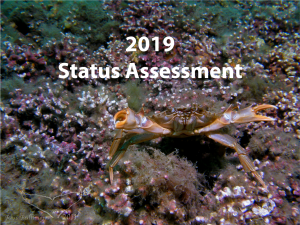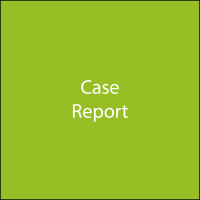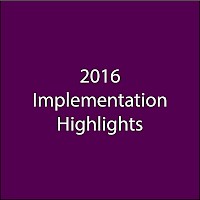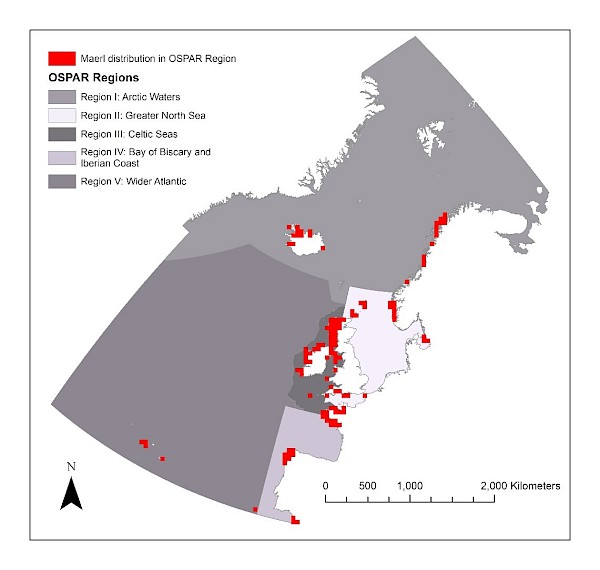Maerl Beds
Habitat: Maerl Beds

Description: Maërl is a collective term for various species of non-jointed coralline red algae (Corallinaceae) that live unattached. These species can form extensive beds, mostly in coarse clean sediments of gravels and clean sands or muddy mixed sediments, which occur either on the open coast, in tide-swept channels or in sheltered areas of marine inlets with weak current.
OSPAR Regions where under threat and/or in decline: III
What is the latest status of the feature? 
The status assessment describes the latest changes in distribution, abundance and range of the feature, as well as any changes in the threats and pressures impacting the feature. The status assessments are updated regularly and inform OSPAR’s consideration of the effectiveness of the measures and actions that have been adopted and implemented by Contracting Parties.
Why is this feature included on the OSPAR List? |  |  |
What protective measures and actions has OSPAR committed to taking? |  |  |
What actions have been implemented by OSPAR? |  |
Key facts
Key message
Maerl beds continue to be threatened and/or declining in Regions II, III and IV. The current status is unknown in Region I. In the current assessment period (2013-2018) maerl beds have been impacted by extraction, fishing, mariculture, dredging, climate change, non-indigenous. Maerl extraction has been prohibited in France since 2011 and in some parts of the UK.
Distribution

Ecological importance
Maërl beds are an important habitat for a wide variety of marine animals and plants which live amongst or are attached to the nodules, or which burrow in the coarse gravel or fossil maërl beneath the top living layer (Grall & Glémarec, 1997). The beds studied to date have been found to harbour a disproportionately high diversity and abundance of associated species in comparison with surrounding habitats, and some of these species are confined to the maërl habitat or rarely found elsewhere. Dead maërl also has an ecological importance, supporting diverse communities, although these have been reported to be less rich than those which in live maërl beds (Keegan, 1974). Both dead and living maërl deposits are also considered to be an important source of subtidal and beach-forming calcareous sediments (Farrow et al., 1978). Maërl beds may also be important nursery areas for commercially valuable molluscs and crustaceans. This aspect has not been well studied but there is good evidence that they are nurseries for at least a few species e.g. the black sea urchin Paracentrotus lividus in maërl deposits in Ireland and scallops on maërl beds in France and the west of Scotland (Thouzeau, 1991; Keegan, 1974; Birkett et al., Background Document for Maërl beds 8 1998). They also provide structurally complex feeding areas for juvenile fish such as Atlantic cod, and reserves of commercial brood stock for species such as Pecten maximus, Venus verrucosa and Ensis spp. (Hall-Spencer et al., 2003).
Condition
Maërl beds have undergone well-documented declines in condition and have been removed for commercial use in all regions other than the Wider Atlantic. Commercial extraction, scallop dredging, construction projects and fish-farming currently impact certain maërl beds. As only a limited number of maërl beds are protected in the OSPAR area further declines in their condition are expected over the next decade due primarily to commercial extraction, mariculture and demersal fishing activities.
Threats and impacts
The primary threats that were identified in 2010 QSR were commercial extraction, mariculture and fisheries (Hall-Spencer et al., 2010), which have also been identified as key threats in the current assessment (2013-2018). Extraction is a current (2013-2018) and predicted future threat (2019-2030) in the Spanish part of the Bay of Biscay and Iberian Coast (IV), however, is banned in France in Regions II, III & IV and in the UK in Region III. Information on extraction activities were not available for the Danish and Swedish parts of the Greater North Sea (II). The 2010 QSR, noted that extraction was ongoing in the Icelandic part of Arctic Waters (I), however, there is no updated information on this. Mariculture and fisheries are current (2013-2018) and predicted future threats (2019-2030) in both the Greater North Sea (II), Celtic Seas (III) and Bay of Biscay and Iberian Coast (IV) and were noted as probable threats to Arctic Waters (I) in the status assessment in 2010 QSR.
The current assessment also identified dredging for navigational purposes and introduction of spread of non-indigenous species as current (2013-2018) and predicted future threats (2019-2030) in the Greater North Sea (II) and Celtic Seas (III). Introduction of spread of non-indigenous species was also noted as a current and future threat in the Norwegian part of Arctic Waters (I).
The past and future trends of three key pressures/activities that are of concern to biodiversity (including maerl) in the Swedish part of the Greater North Sea (II) are as follows: tourism and recreational activities are increasing, siltation rate changes, including smothering are stable and changes in suspended solids are decreasing.
In the Norwegian part of Arctic Waters (I), there is not enough evidence to identify past trends in pressures. Ocean acidification has been identified as the most important future threat in the region, which, together with temperature increase is assumed to cause a slow but significant reduction (<20% over 10 years) (Gundersen et al., 2018).
Management measures
Each Recommendation requires Contracting Parties to report on the methods used to implement the measures. The methods are Legislation, Administrative action and Negotiated agreement, or any combination of these. Recent examples include:
1. France and the UK have national legislation for the conservation of maerl beds;
2. There are monitoring, surveillance, and mapping programmes in France and the UK;
3. The UK collates data collected by citizen scientists and also data used for EIA purposes;
4. The UK has 16 maerl bed protected areas, and has put fisheries measures in place;
5. France has a project involving fishermen and scientists to better understand impacts of fishing gears

